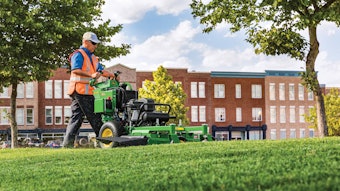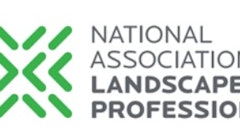
The National Association of Landscape Professionals (NALP), through the Industry Growth Initiative, recently held a Workforce Development and Recruitment Summit at its office in Fairfax, Virginia, to address the industry’s workforce shortage.
Approximately 50 attendees from major regional green industry associations, as well as experts from other major industries, attended the event, sharing their respective experiences in dealing with the realities of the workforce shortage, as well brainstorming solutions.
The Workforce Shortage Is Real
“I don’t need more business; I need more people to do the work.”
That is the underlying sentiment that landscape contractors and association representatives expressed at last year’s Workforce Development and Recruitment Summit. And the times haven’t changed; in fact, the situation has escalated.
Landscaping has the second worst unemployment rate by industry—only construction has it beat, says the Bureau of Labor Statistics.
And for the first time in history, there are more job openings than there are eligible workers to fill them. The Bureau of Labor Statistics recently reported that there are 6.7 million job openings and just 6.4 million available workers.
The “Number 1 problem for businesses is finding qualified workers,” said Mark Zandi, chief economist at Moody’s. “At the current pace of job growth, if sustained, this problem is set to get much worse. These labor shortages will only intensify across all industries and company sizes.”
So, we feel your pain; the workforce shortage is real. Now what are we going to do about it?
Workforce Shortage Solutions
At the Workforce Development and Recruitment Summit, attendees started by sharing their current workforce challenges and wins. The goal of the meeting was to realize that “while we compete with other industries for people, we are also in this together,” explained Missy Henriksen, vice president of public affairs at NALP. “We must share our voices so we can educate each other and work together to fill vacancies.”
Experts from other industries, including Greg Sizemore, vice president workforce development for Associated Builders and Contractors, and Jay Lim, vice president of workforce development policy at the American Trucking Association, presented their related workforce dilemmas and how they are battling them.
Then, Carolyn Renick from the U.S. Department of Labor and industry representatives dove into the topic of apprenticeships and the programs currently in place, as well as those being launched (NALP plans to launch a national apprenticeship program in early 2019), and how landscape professionals can take better advantage of using these programs to enhance their workforces.
These are the common themes that resonated during discussions among the group:
- Landscape, construction and trucking are word-of-mouth industries. To attract talent, we must continue to tell our stories. This also helps combat the stigma that a person is not successful unless he or she goes to college.
- These are rewarding careers people don’t need degrees to land. We need to show prospective employees how they can learn and grow within our organizations.
- Educating children at a young age (and their parents) about the importance of landscapes and the benefits of a career that helps the environment is a good idea. We must change their perception of landscaping as a career by showcasing the many options available.
- We must highlight the advantages of working outdoors, especially in an increasingly indoor-reliant society.
- Landscape professionals should take advantage of regional and national apprenticeship programs to draw in workers. This could encourage millennials and Generation Zers to start earning while they learn versus acquiring debt by attending college right away.
- The industry should tap into all categories for potential employees, including retirees, veterans/former military and former prison inmates.






























